Are you facing a crucial decision moment, torn between Zendesk vs. Jira Service Management in your search for the ultimate IT Service Management (ITSM) platform? The ITSM space offers many options, each promising to meet your unique needs and requirements, making the choice challenging.
In this blog post, we’ll embark on a head-to-head ITSM tools comparison of these two prominent contenders in the ITSM arena.
However, neither of these solutions may fully satisfy your organization's specific demands. That's why we'll also introduce you to an alternative platform that could perfectly match your needs: InvGate Service Management. This robust service desk software is designed to streamline service delivery and empower organizations to elevate their ITSM practices to new heights.

Table of contents
- TL;DR
- What is Zendesk?
- What is Jira Service Management?
- Considering InvGate Service Management as an ITSM solution alternative
TL;DR
- Zendesk offers robust features and customization options; however, it is subject to limitations in pricing and customization.
- Jira Service Management earns praise for sprint planning, task assignment, ticketing, and the end-user portal. Criticisms include challenges in migration, reporting limitations, a steep learning curve, and reliance on plugins.
- On the flip side, InvGate Service Management offers a seamless ITSM setup, adaptable deployment options, powerful ticketing and incident management features, and self-service capabilities that prioritize cost-effectiveness and innovation.
We tried to be as thorough as possible, but if you don't have enough time to read it through and through, here's (another) TL;DR: InvGate Service Management can do everything we say here, and you can test it right away for free for 30 days.
Most looked-at features by buyers
When considering ITSM solutions, prospective buyers value specific features that meet their organization's needs. Understanding these desired features can help you make an informed choice.
Let's take a closer look at the key attributes that potential buyers typically focus on when comparing ITSM tools.
- User experience and interface - Buyers evaluate the user experience and interface of the platform, focusing on its ease of use and its impact on user adoption and productivity. They value an intuitive interface that promotes efficient interaction with the software. Additionally, for organizations with remote or mobile workforces, mobile accessibility is a crucial consideration.
- Self-service portal and knowledge base - Buyers highly appreciate the inclusion of a self-service portal as it empowers end-users to independently resolve common issues and find relevant information without requiring direct assistance.
- Streamlined IT service catalog - Organizations often require a service catalog that allows users to request specific IT services or resources. This feature simplifies service requests, provides visibility into available services, and facilitates effective service delivery management.
- Support automation and Workflow Management - Buyers actively search for software solutions that offer automation capabilities to streamline repetitive tasks such as ticket routing, approvals, and escalations. These automation features contribute to enhanced efficiency and productivity.
- Ticket Management - Buyers attach significant importance to having a comprehensive Ticket Management System within their help desk software. This feature enables efficient tracking, assignment, and resolution of customer inquiries and support requests.
- Insightful reporting - Buyers seek help desk software with powerful reporting tools like dashboards and reports, providing valuable insights into their IT operations and performance. This data-driven approach facilitates informed decision-making and continuous service improvement.
- Seamless integration capabilities - Integration with other systems and applications is a fundamental requirement for buyers, as it ensures smooth data flow and process automation. Integrating with existing tools and platforms is highly prized for improved efficiency and a unified user experience.
- Efficient Asset Management - Users prioritize software that offers robust IT Asset Management capabilities to help them maintain accurate inventories and optimize resource utilization within their organizations.
- Scalability - Organizations undergoing growth with evolving needs prioritize solutions that can readily adapt to their expansion and allow for customization. It's vital for the solution to offer the ability to create custom fields, workflows, and extensions/plugins, enabling them to tailor the solution according to their unique business requirements.
- Customization and flexibility - Buyers favor software solutions that provide customization options, enabling them to tailor the platform to their specific business needs. This flexibility ensures alignment with their unique workflows and processes, resulting in increased user satisfaction and overall effectiveness.
- Pricing and support - Buyers evaluate the cost-effectiveness of the solution, considering licensing models, subscription plans, and any additional costs associated with features or users. The availability of customer support, documentation, and training resources also significantly influences their decision-making process.
- ITIL compliance - Many organizations adhere to ITIL best practices for IT Service Management. Buyers may prioritize solutions that support ITIL processes, such as Incident Management, Problem Management, Change Management, and Asset Management, as these processes align with their organizational standards.
What is Zendesk?
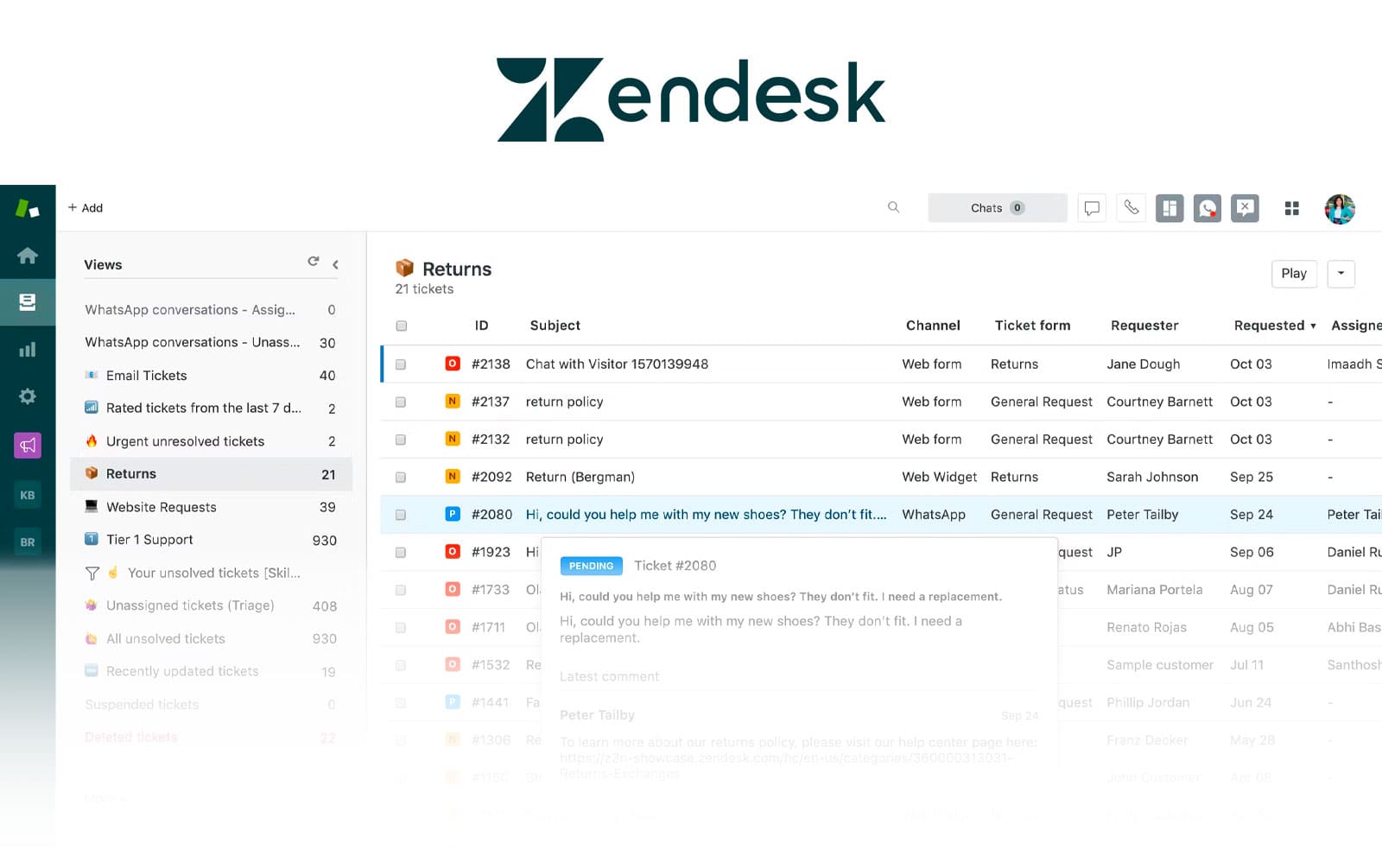
Zendesk for Service is a robust solution created to meet the needs of IT Service Management in businesses.
Zendesk Inc. is a software development company that focuses on delivering customer service solutions through a software-as-a-service (SaaS) model. This platform equips organizations with tools for personalized customer interactions, predictive analytics for common customer questions, data collection, engaging with customers, and gaining valuable insights. It serves clients worldwide across different regions, including Europe, Asia Pacific, Latin America, and North America.
What users like from Zendesk
Customers have highlighted numerous benefits of Zendesk, backed by reviews from reputable sources such as Gartner. Here are some of the benefits that have been identified.
- Customization options - The user interface distinguishes itself with its exceptional customizability, allowing businesses to tailor the platform precisely to meet their specific needs.
- Extensive feature set - Zendesk has introduced a variety of valuable features, including capabilities for multichannel messaging, workflow management via the flow builder, and advanced tools for knowledge management. The Admin Center simplifies configuration tasks, making handling the platform's intricacies easier.
- Multichannel support - The tool manages tickets across multiple channels, seamlessly integrating with social media, chat applications, and traditional communication methods like email. This integration guarantees that agents operate within a unified workspace, promoting efficient operations.
- Extensive app marketplace - The platform offers a marketplace with a wealth of over 1,200 third-party applications and integrations. This resource is invaluable for organizations seeking to enhance their ITSM capabilities.
- Comprehensive reporting and analytics - Zendesk Explore offers an extensive suite of options for reporting and querying, enabling informed decision-making and robust performance tracking.
What users don’t like from Zendesk
While Zendesk has many strengths and positive attributes, customers have also expressed criticism and reservations about certain platform aspects. These concerns have come to light through reviews from sources such as Gartner. Here are some of the unfavorable elements that have been highlighted.
- Limitations in dashboard customization - Full customization of dashboards is restricted for users on lower-tier plans, as it is primarily available in the Enterprise tiers. This constraint can impede the ability to tailor analytics views to specific requirements.
- Integration and compatibility considerations - The software seamlessly integrates with third-party applications and its proprietary CRM solution, Zendesk Sell. However, fully harnessing these capabilities necessitates the use of higher-tier plans.
- Reporting and analytics constraints - While Zendesk's Explore tool offers a variety of reporting options, it's important to note that dashboard customizations are notably limited for users on the Enterprise plan. Some users have suggested that Zendesk could enhance this aspect, especially given its pricing structure.
- Pricing challenges across business sizes - Zendesk's pricing structure can pose challenges, particularly for small to mid-sized businesses. The initial cost starts at $49 per agent per month, and higher-tier plans are required to access enterprise-level features.
What’s Zendesk’s argument over Jira Service Management?
Zendesk makes a compelling argument in favor of its platform over Jira Service Management by highlighting several key advantages that set it apart.
- Customization options - Zendesk's user interface stands out with its exceptional customizability. This level of customization provides a significant advantage in adapting the system to unique workflows and requirements.
- Extensive feature set - Zendesk provides an extensive array of valuable features that ensure organizations have the tools to manage their support and service operations effectively.
- Multichannel support - Zendesk excels in managing tickets across multiple communication channels. It seamlessly integrates with social media platforms, chat applications, and traditional methods like email. This integration ensures that agents can work within a unified workspace, promoting efficiency and providing a cohesive customer support experience.
- Extensive app marketplace - Zendesk offers an extensive marketplace with over 1,200 third-party applications and integrations. This resource allows businesses to extend Zendesk's functionality to meet specific business needs and integrate with existing tools seamlessly.
- Comprehensive reporting and analytics - Zendesk's reporting and analytics capabilities, specifically through Zendesk Explore, provide a robust suite of options for reporting and querying. These analytical tools enable organizations to improve their service delivery and customer satisfaction levels continually.
What is Jira Service Management?

Jira Service Management, created by Atlassian, is an IT Service Management platform known for its user-friendly interface and robust capabilities that help businesses enhance service delivery and boost customer satisfaction. Currently, Jira Service Management is offered as a cloud-based solution, allowing organizations to leverage the advantages of cloud computing for their Service Management requirements.
Atlassian, the company responsible for Jira, was established in 2002 by Mike Cannon-Brookes and Scott Farquhar in Sydney, Australia. Over time, the company has experienced significant growth and expanded its global footprint by establishing offices in various countries.
Atlassian specializes in crafting software and tools tailored for developers and project managers, including Confluence, Bitbucket, and Trello. These tools address a wide range of needs, such as project management, issue tracking, collaborative content creation, code management, and team coordination.
What users like from Jira Service Management
Analysis conducted by reputable sources like Gartner and G2 has highlighted the positive feedback received from Jira Service Management users. Here are some notable advantages recognized.
- Intuitive and user-friendly interface - Users highly value the platform's user-friendly interface, which improves incident and request management. The design promotes ease of use, allowing teams to navigate and interact with the system effortlessly.
- Enhanced user portal for self-service - Jira Service Management's platform includes an improved user portal that enhances the self-service experience. This portal allows users to self-assess incidents and requests, empowering them to resolve issues independently whenever possible. Additionally, users can rate the overall process after issue resolution, providing valuable feedback for continuous improvement and enhancing customer satisfaction efforts.
- Efficient ticketing system with customizable workflows - The ticketing system and customizable workflows make task management straightforward. Teams can easily track and prioritize tickets based on their specific needs.
- Streamlined sprint planning and task assignment - Jira Service Management seamlessly integrates with popular collaboration platforms like Slack and Teams, simplifying sprint planning and task assignment. The Kanban view acts as a centralized hub for task management, and the tagging feature enables efficient organization of project-specific tasks.
- Comprehensive task details and robust filtering capabilities - Users appreciate the wealth of task details that offer in-depth insights into each task. This feature provides teams with a holistic understanding of their work. Furthermore, the platform offers robust filtering capabilities, enabling users to search, sort, and organize tasks based on specific criteria, ultimately boosting productivity.
- Flexible pricing options - Jira Service Management provides a range of flexible pricing options suitable for organizations of various sizes and budgets. This includes a free plan suitable for small teams of up to three users with 2 GB of storage. The cloud-hosted option offers a reasonably priced base package.
What users don’t like from Jira Service Management
Despite its numerous strengths and positive attributes, Jira Service Management has not been immune to user criticisms and concerns. Here are some recurring issues identified through analyses conducted by sources like Gartner and G2.
- Challenging migration process - Users have expressed frustration with the complexity of migrating their projects to Jira Service Management. Some have encountered difficulties that may necessitate a separate user subscription, adding to the overall complexity of the migration process.
- Steep learning curve - The platform's extensive capabilities and functionalities can pose a steep learning curve for users. This complexity may require additional guidance or training for individuals to navigate and utilize the system and its features effectively.
- Limited and complex integrations - Users have expressed a desire for more accessible integrations and often had to develop custom solutions to connect Jira Service Management with specific tools. Integrating the platform with external systems has proven to be challenging and time-consuming.
- Reliance on additional plugins - Users have found it necessary to rely on additional plugins to access basic features within the system. Additionally, meeting data protection regulations such as GDPR has presented challenges for some users.
- Limitations in task tracking and reporting - Users have encountered limitations in tracking tasks and generating reports, which has hindered their ability to monitor and analyze project progress and performance effectively. This includes challenges when tracking multiple tasks, creating comprehensive reports, and customizing dashboards within the platform.
- Less intuitive interface - In comparison to alternative options, some users have found Jira Service Management's interface less intuitive, particularly when it comes to external customers interacting with the platform.
- Issues with Atlassian support - Users have reported difficulties when seeking assistance from Atlassian support. Obtaining the necessary support and guidance has been a challenge for some, potentially impacting their overall experience with the platform.
What’s Jira Service Management’s argument over Zendesk?
Jira Service Management presents a compelling argument in favor of its platform over Zendesk by emphasizing several key strengths and advantages.
- Intuitive and user-friendly interface - Users highly value Jira Service Management's user-friendly interface, which greatly enhances the management of incidents and service requests. This design streamlines user adoption and ensures a smoother overall experience.
- Enhanced user portal for self-service - This portal empowers users to self-assess incidents and requests, giving them the tools to resolve issues whenever possible independently.
- Efficient ticketing system with customizable workflows - Teams can efficiently track and prioritize tickets based on their specific needs. This flexibility ensures that organizations can seamlessly adapt the system to match their unique workflows.
- Streamlined sprint planning and task assignment - Jira Service Management seamlessly integrates with popular collaboration platforms such as Slack and Teams, making sprint planning and task assignment a breeze. This integration ensures that teams can collaborate effectively and enhance their productivity.
- Comprehensive task details and robust filtering capabilities - The platform’s comprehensive task details and robust filtering capabilities equip teams with a holistic understanding of their work and enable users to improve productivity and task management.
- Flexible pricing options - Jira Service Management caters to a wide range of organizations with its flexible pricing options. These options accommodate organizations of various sizes and budgets, ensuring that there is a suitable plan for everyone.
Considering InvGate Service Management as an ITSM solution alternative
Although Zendesk and Jira Service Management are well-known competitors in the ITSM industry, it's essential to consider alternative solutions that align more closely with your organization's unique needs. In this context, InvGate Service Management stands out as a compelling choice that merits careful evaluation.
Let's explore the advantageous features of InvGate Service Management that make it a valuable option for fulfilling your organization's ITSM requirements.
Outstanding user experience
InvGate Service Management prioritizes delivering an exceptional user experience through careful design and adherence to UI/UX best practices. Its intuitive interface promotes rapid adoption, reducing the need for extensive training and enabling users to be productive.
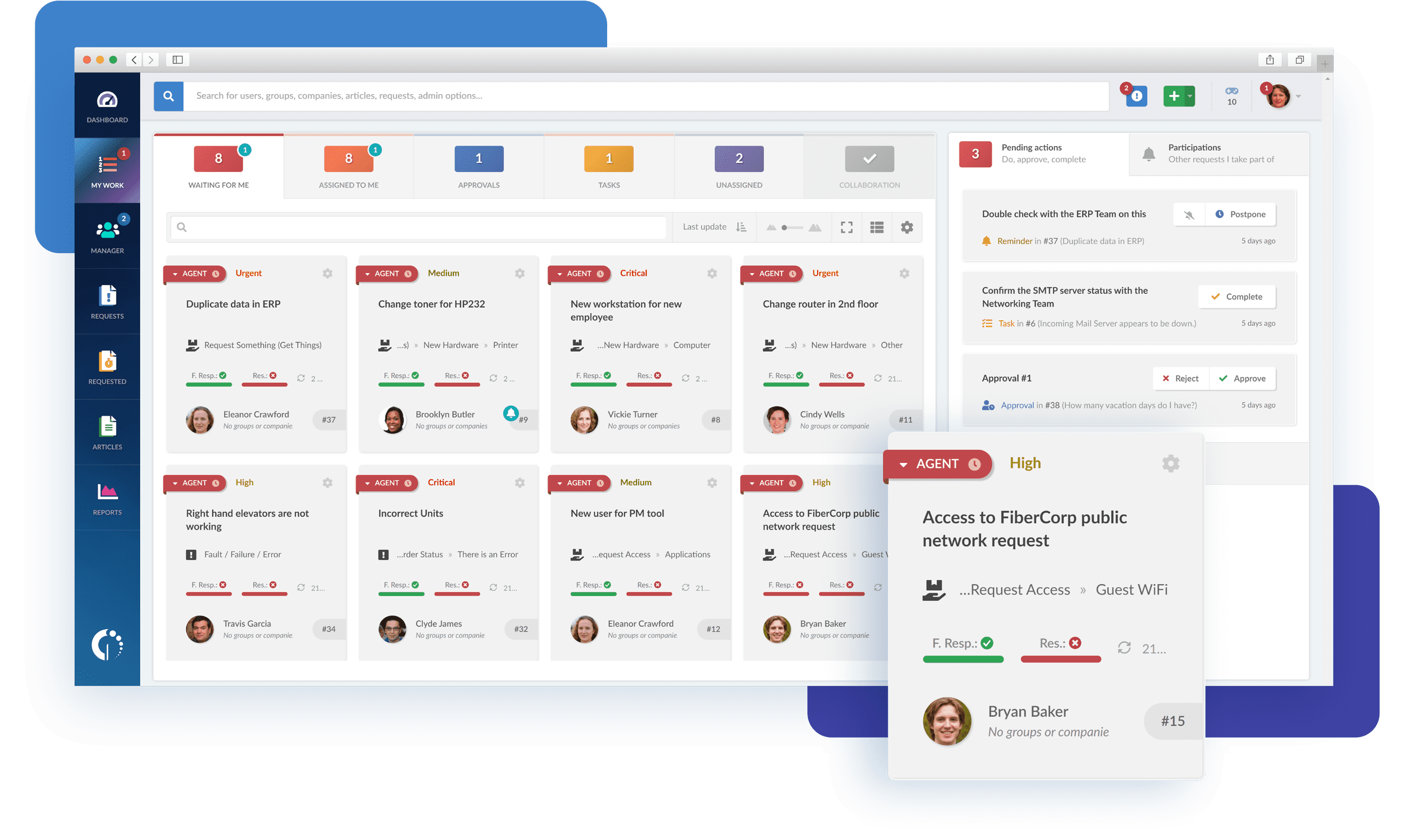
Customization and flexibility
InvGate Service Management provides flexible deployment options, allowing organizations to choose between on-premise or cloud-based solutions. This flexibility ensures that the platform can adapt to the specific requirements of different sectors and industries.
Robust Ticketing and Incident Management
InvGate Service Management excels in providing robust capabilities for managing tickets and incidents. It facilitates efficient tracking, collaboration, and resolution of tickets, empowering IT teams to handle and prioritize incidents effectively. With features like automated ticket routing, customizable workflows, and SLA Management, InvGate Service Management enhances the efficiency of incident resolution processes.
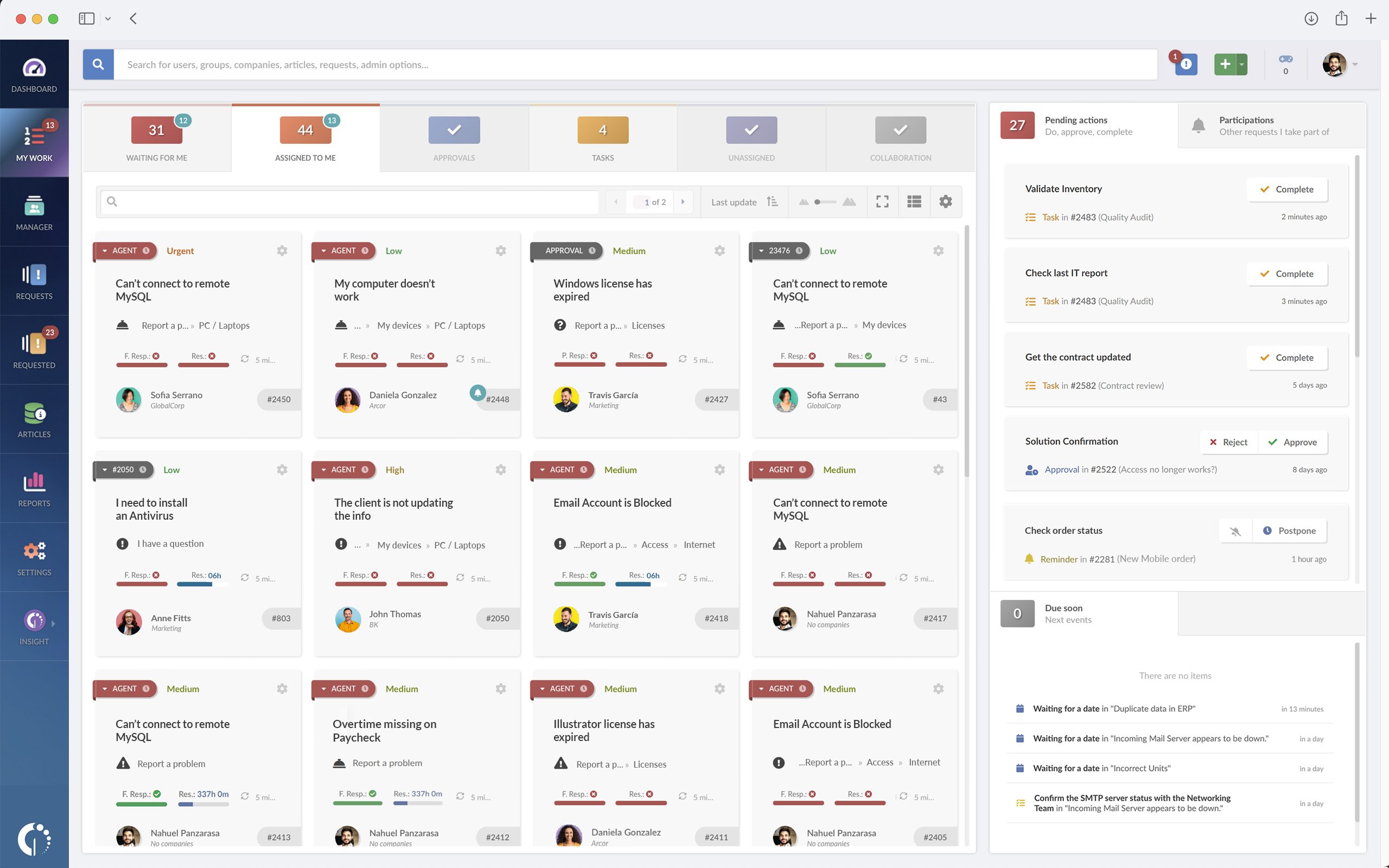
Streamlined configuration and setup
InvGate Service Management offers a simplified configuration and setup process, utilizing a no-code/low-code approach. This approach enables both new and experienced users to implement the system without requiring extensive technical expertise. The platform expedites setup with straightforward configuration options, allowing organizations to harness its powerful ITSM capabilities quickly.
Purpose-built for ITSM, perfect for ESM
InvGate Service Management is specifically designed for ITSM while seamlessly extending its capabilities to Enterprise Service Management (ESM). It empowers operational departments to enhance their processes and fully embrace the advantages of digital transformation. With a primary focus on ITSM and strong performance in ESM, InvGate Service Management enables streamlined workflows and comprehensive digital transformation initiatives across all departments.
Powerful self-service capabilities
InvGate Service Management incorporates robust self-service functionalities, including a user-friendly portal, an extensive IT service catalog, and a knowledge base. These capabilities empower end-users to independently resolve common issues, access a wide range of IT services, and utilize self-help resources, thus reducing the burden on IT staff.
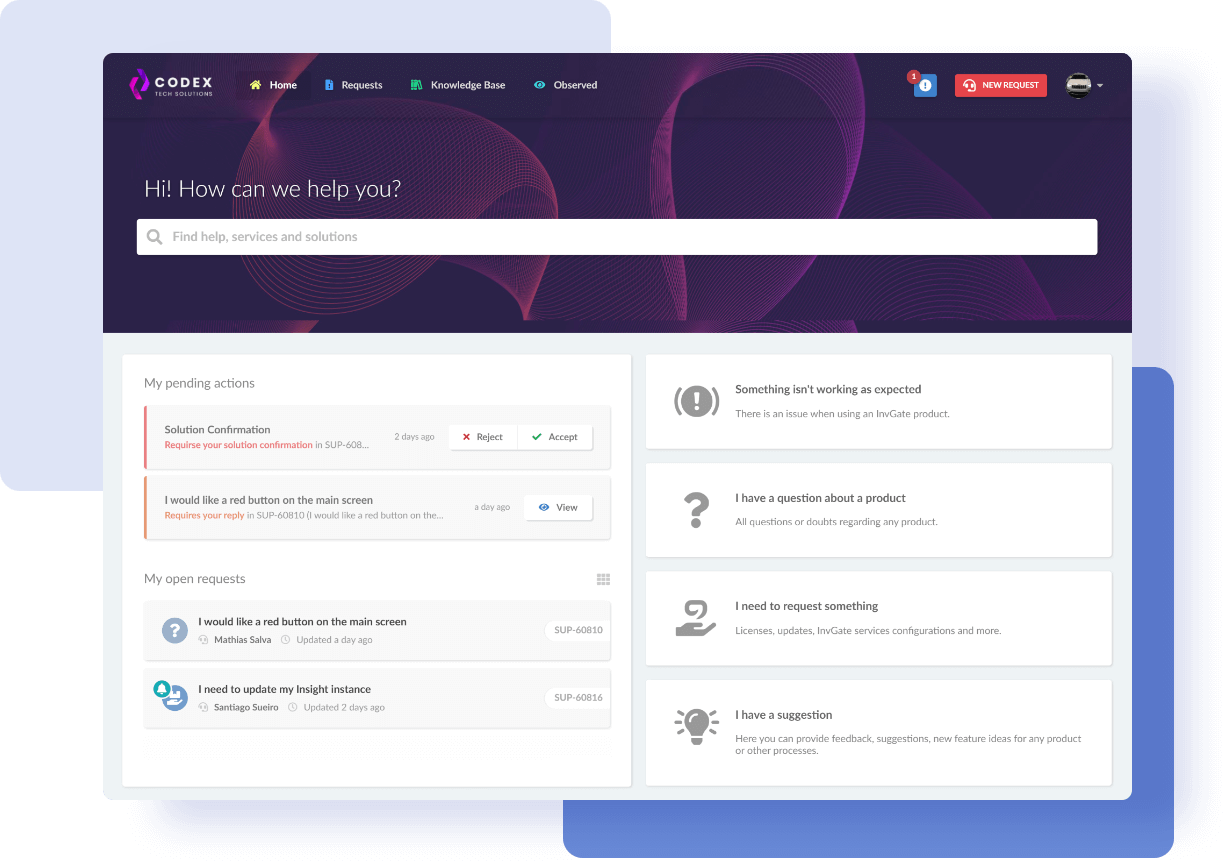
Comprehensive Asset Management
By integrating InvGate Service Management with InvGate Asset Management, organizations gain a comprehensive view of their IT ecosystem, leading to improved service delivery and reduced downtime. InvGate Asset Management offers various features, including IT Asset Discovery, Inventory Management, Software License Management, and maintenance schedules.
Extensive reporting and analytics
InvGate Service Management provides comprehensive reporting and analytics functionalities, allowing organizations to gain valuable insights into their IT operations and performance. The platform offers ready-to-use reports and customizable dashboards, enabling IT teams to analyze data, identify patterns, and make informed decisions to enhance their services.
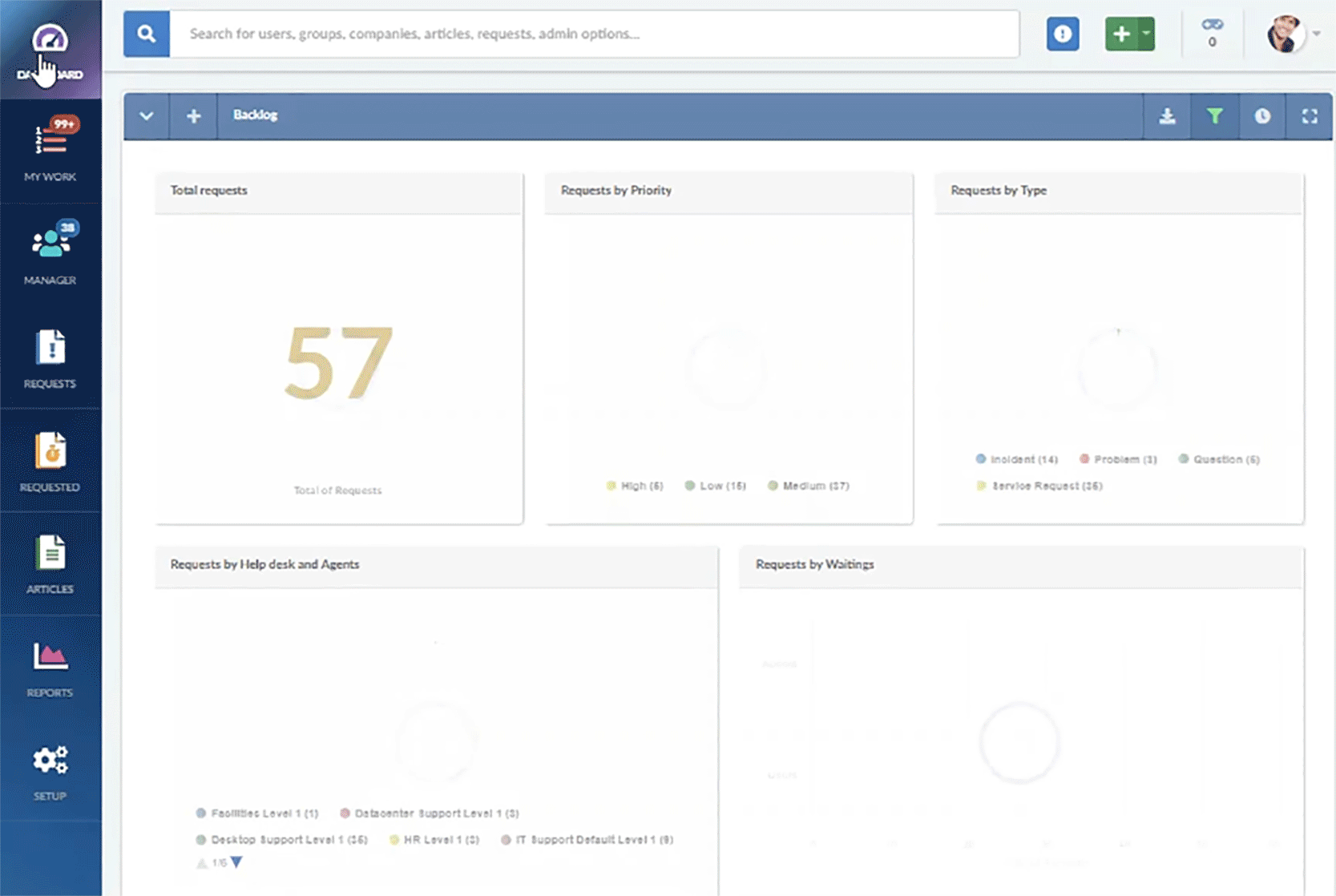
ITIL best practice compliance
InvGate Service Management has earned the prestigious PinkVERIFIED Certified certification,, demonstrating its commitment to upholding ITSM excellence. Whether organizations are embarking on their ITIL journey or managing complex operations, InvGate Service Management offers a user-friendly and feature-rich experience that aligns with industry best practices.
Cost-effective solution
InvGate Service Management delivers a cost-effective solution without compromising functionality. It provides a comprehensive range of ITSM features at a competitive price, making it an attractive choice for organizations seeking affordability without sacrificing capabilities. Compared to alternatives like Zendesk and Jira Service Management, InvGate Service Management balances cost and functionality.
Fast ROI and ongoing innovation
InvGate Service Management ensures a fast return on investment through efficient implementation processes. Within weeks, organizations can start realizing the benefits of this robust ITSM solution. Additionally, regular feature updates keep users at the forefront of technology without incurring additional costs.
Next steps
Organizations have diverse requirements, and choosing the right IT Service Management solution is a critical decision that can significantly impact their operations and customer support. In the ongoing debate of Zendesk vs. Jira Service Management, both platforms bring unique strengths and capabilities.
However, another compelling contender to consider in this landscape is InvGate Service Management. This platform stands out as a formidable player in the ITSM field, offering streamlined functionalities and robust features that can enhance IT services and drive digital transformation. To fully grasp its transformative capabilities, explore our live demo. This firsthand experience will allow you to see how InvGate Service Management can optimize your IT services and support a future-proof ITSM strategy.
















